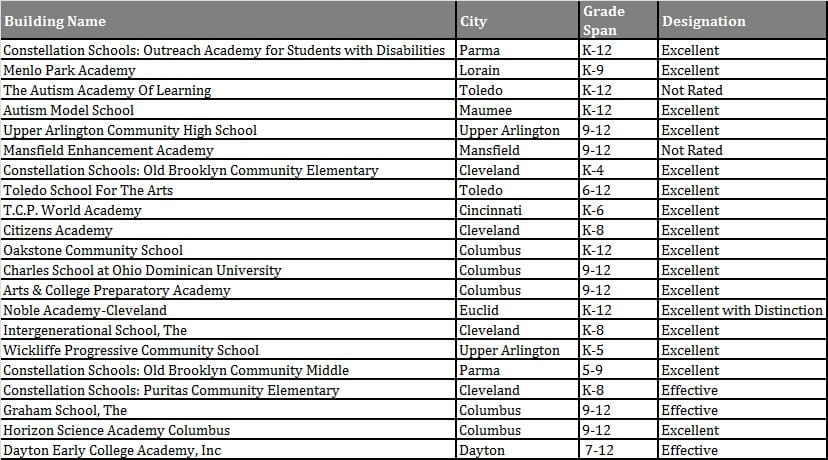Among the many differences the conference committee must resolve between the House and Senate versions of the state budget is a Senate provision that would reward exceptional charter schools with low-cost facilities. Specifically:
- Districts would be required to offer up available space to charter schools for lease if it goes unused by the district for two years,
- When multiple charter schools express interest in the space, the district would have to lease it to the highest-performing school among the mix, and
- If the leasing charter school is in the top 50% of all schools statewide, based on its “performance index score” – a measure of academic achievement – the district would lease the space for $1 per year.
Gene Harris, superintendent of Columbus City Schools, Ohio’s largest district and one with a history of blocking charter schools from its unused facilities, is opposed to the change. Her reasons include that charters might not have sufficient funds to maintain a facility and that it prevents the district from leasing to other “important” organizations. These are valid concerns, and the conference committee could amend the provision to address them. But this seems like yet another instance where anti-charter sentiment among the education establishment is so ingrained that districts struggle to recognize those pro-charter policies that can actually benefit them.
For starters, this provision is fiscally smart for districts. If a district must maintain unused facilities regardless, why not lease to a charter school that will pick up those costs? Further, this provision requires districts to lease, not sell, the space (as current law requires), so if a district’s enrollment rebounds or it otherwise needs to use the space in question, it can certainly reassume occupation and care of the facility down the road. And let’s not forget that the buildings charter schools are after are older ones that, for the most part, are emptying out because the state is pouring billions into building fancy new schools for districts.
Second, this provision is good for students. It encourages the growth of high-performing schools, not the unchecked flourishing of lousy ones. Consider the $1-annual-lease clause. Last school year, 3,503 Ohio school buildings had a Performance Index score (another 172, for various reasons, did not). Because of the overall mediocre performance of the state’s charter schools (and this budget bill separately tackles the issue of charter quality), just 21 charter schools statewide would meet the bar for the $1 annual lease (see Chart 1 for the list of qualifying schools).
These are schools that any urban superintendent should be comfortable “losing” students to – schools like Citizens Academy and the Intergenerational School, both in Cleveland and members of the Breakthrough Schools network of high-flying charter schools; Dayton Early College Academy in Fordham’s hometown; the Charles and Graham Schools at Ohio Dominican University; and Arts & College Preparatory Academy in Columbus. All of the schools that make the cut are out-performing their home school districts and many are doing it whilst serving the neediest and most challenging students in their communities.
Chart 1. Charter schools in the top 50 percent of all Ohio public schools by Performance Index score, 2009-10

Unlike the notoriously bad charter provisions inserted in the budget bill by the Ohio House (and rightly and swiftly removed by the Senate), this charter policy change is one that districts should embrace. They should let go of their instinctive, immediate opposition to anything that could “help” the competition and instead be supportive of those policies that can be mutually beneficial and, most importantly, improve education options for students.
